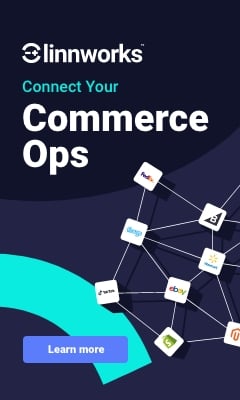Insight: overcoming the issue of disparate disconnected frontline employees
Retailers with dispersed employees have the major challenge of reaching and engaging with their staff on an ongoing basis, which today is a necessity as it ultimately drives a high level of customer service.
Ahead of speaking at The Retail Bulletin HR Summit 2018, Guy Chiswick, managing director for UK & Ireland at Speakap, considers how retailers can overcome this issue and deliver exemplary service to their customers.
“Having worked in the retail space throughout my career I’ve been able to see the need for a solution that could reach and engage front-line employees. A retailers’ biggest cost, and its greatest weapon, in an increasingly challenging and competitive marketplace, is its frontline employees,” he suggests.
Speakap ventures into UK market
Addressing this issue is the Speakap solution that launched in the UK in May on the back of a significant ‘Series A’ funding round of Euros 12 million and a successful business across mainland Europe. The company has six offices from which it works with 300 partners across retail, and the leisure and hospitality sectors. The app is used in 27 countries around the world with clients including McDonald’s, Rituals, IKEA and G-Star.
It competes with a variety of players that are also looking to provide a solution to the growing reach and engagement problem.
Competition has its flaws
Firstly, there are the software companies who have produced solutions that sit on top of their core systems. “A lot of businesses who have identified the need for reaching and engaging front-line employees think this is the answer but actually these solutions are not fit-for-purpose because they emanate from a desktop environment and require an email address,” says Chiswick.
He adds that they are also open to everybody – which “creates a lot of noise but not much buzz” because they have too much irrelevant information coming through the pipeline.
Secondly, there are the social platforms that have created business tools out of their core consumer tools. “The user interface and customer experience is good but they are not designed for the workplace. The messaging that individuals receive is often based on the algorithms of the core product so those people with the most posts are most likely to be shown in people’s timelines,” he explains.
The other problem is that this information is not necessarily relevant to the individual’s work life and their department at work. There is also the uncertainty over what these platforms are doing with the data they are accruing from the individuals.
Thirdly, there are the consumer-messaging services that are then used for business purposes. This raises issues because when an individual signs-up to them their business and personal contacts all then merge.
“This represents a business risk in terms of mixing the two things because when somebody leaves an organisation they will still be involved in the word-related messaging. It is also not possible to switch off when on holiday in order to only receive personal messages,” warns Chiswick.
Bespoke solution to solve the problem
In contrast, he says, Speakap has been designed for the purpose of reaching and engaging with employees. It has not been spun-off from some other product. It mirrors an organisation’s structure thereby ensuring employees only receive messaging relevant to them and they are not inundated with irrelevant noise.
“The solution is also branded up with the client’s identity. This means that as an app it stands out on people’s phones. There is also a professional feel to the solution, which helps with engagement and adoption by what are often part-time employees,” he adds.
Focused usage saves time
Chiswick says this is proven by the statistics, which show that companies enjoy 80% adoption rates in the first four weeks of Speakap being introduced and the average user spends 10 minutes per week, which equals only 35 seconds per visit, which they do 3.5 times per day on average.
The reason the dwell time is so short is because this is all the time that is actually needed to check the timeline, check if there are any notifications, and to send any messages. It is very quick because it is easy for the user to access the relevant information.
“It is clear from the experience across Speakap’s broad range of clients that the app is used in different ways by each organisation, says Chiswick.
Myriad uses across client base
For instance, Rituals uses it to power its global roll –out. This sounds rather outlandish but ahead of each new store opening the company will plug the new employees into Speakap in order to supply them with news ahead of their official start, and to also introduce them to other employees.
Along with its use as an on-boarding tool it also plays a role as a platform for training and for highlighting the forthcoming launches of new products via 20-30 second video clips. Rituals also uses it as a way to highlight how well individuals have performed – either directly to the person or to their whole team/department.
IKEA in The Netherlands uses the solution for raising awareness. Employees had previously complained that customers often knew more than they did about products and the company’s advertising campaigns. Nowadays IKEA uses Speakap to show all employees videos of ads before they hit the TV screens and are seen by the general public.
At Suit Supply Speakap is used as a communications tool as well as being the platform on which leader boards are published that show who has sold the most suits in the organisation. It therefore plays a role both raising awareness as well as motivating employees. Each person can see the top performing stores and the best-selling individuals.
The De Bijenkorf department store chain (that is called the Selfridges of The Netherlands as it has the same owner) has tied the app in with the company’s Workforce Management tool. Employees can see the staff roster, book holidays, and change shifts with colleagues through Speakap.
Tailoring the app to build its value
This is an example of how the app can be enhanced and tailored to an individual company’s requirements by integrating it with other systems such as Workforce Management tools, e-learning solutions, customer feedback applications, product ordering systems, and HR productivity solutions.
“While the core use of Speakap is as a one-to-one and top-to-bottom communications tool it can also clearly be used as the base for tying-in a variety of other solutions with myriad different functionalities that helps make the app the go-to tool for managing employees’ working lives,” he suggests.
Chiswick says he is looking forward to presenting at the HR Summit where he will showcase some new research and also give details of a case study as well as outlining his thoughts on the role he believes Speakap can play in the UK market.
Proven track record
“My initial thoughts are that it has been very positively received in the UK market, which has been helped by it already having a proven record of helping retailers with their problems around employee reach and engagement,” he says.
Chiswick believes this issue is only going to grow as the ‘consumerisation’ of the workforce takes hold, whereby people demand to use at work the same devices and type of apps and social messaging tools that they use in their own time.
“They do not want to be using email or desktop applications in the workplace. This issue is compounded in the retail industry where there are many part-time employees who have non-desk-based roles and so retailers will not want to be buying devices specifically for them,” he says.
Interested in HR issues? Why not attend The Retail Bulletin HR Summit on 3 October.














